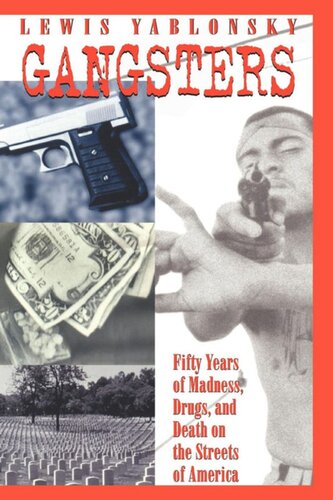

Most ebook files are in PDF format, so you can easily read them using various software such as Foxit Reader or directly on the Google Chrome browser.
Some ebook files are released by publishers in other formats such as .awz, .mobi, .epub, .fb2, etc. You may need to install specific software to read these formats on mobile/PC, such as Calibre.
Please read the tutorial at this link: https://ebookbell.com/faq
We offer FREE conversion to the popular formats you request; however, this may take some time. Therefore, right after payment, please email us, and we will try to provide the service as quickly as possible.
For some exceptional file formats or broken links (if any), please refrain from opening any disputes. Instead, email us first, and we will try to assist within a maximum of 6 hours.
EbookBell Team

4.8
94 reviewsThe effects of gang violence are witnessed every day on the streets, in the news, and on the movie screen. In all these forums, gangs of young adults are associated with drugs and violence. Yet what is it that prompts young people to participate in violent behavior? And what can be done to extract adolescents from the gangster world of crime, death, and incarceration once they have become involved?
In Gangsters: 50 Years of Madness, Drugs, and Death on the Streets of America, Lewis Yablonsky provides answers to the most baffling and crucial questions regarding gangs. Using information gathered from over forty years of experience working with gang members and based on hundreds of personal interviews, many conducted in prisons and in gang neighborhoods, Yablonsky explores the pathology of the gangsters' apparent addiction to incarceration and death.
Gangsters is divided into four parts, including a brief history of gangs, the characteristics of gangs, successful approaches for treating gangsters in prison and the community, and concluding with a review and analysis of notable behavioral and social scientific theories of gangs. While condemning their violent behavior in no uncertain terms, Yablonsky offers hope through his belief that, given a chance in an effective treatment program, youths trapped in violent behavior can change their lives in positive ways and, in turn, facilitate positive change in their communities and society at large.